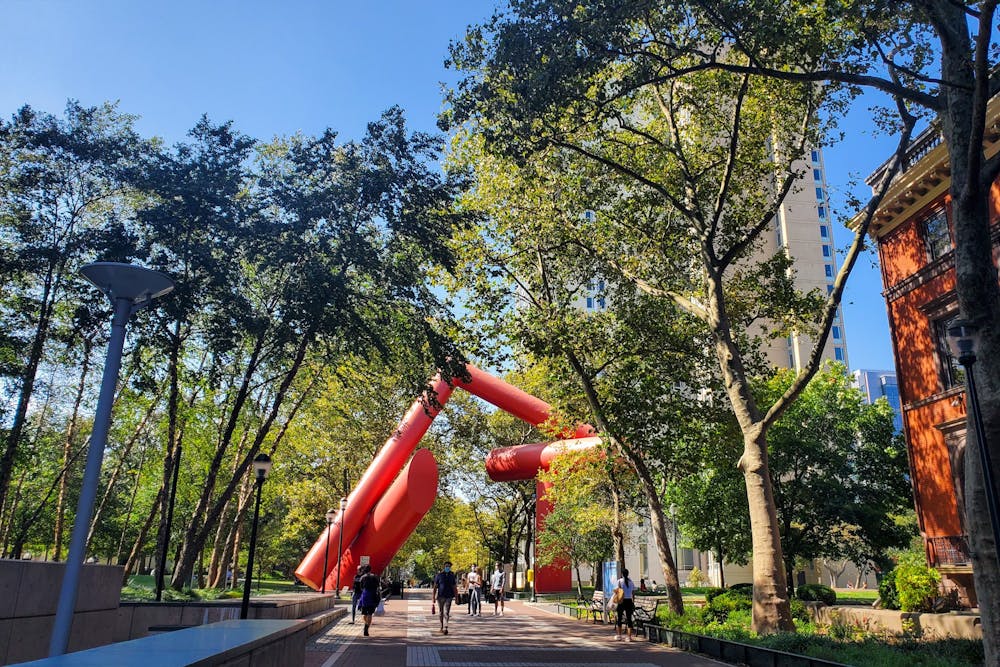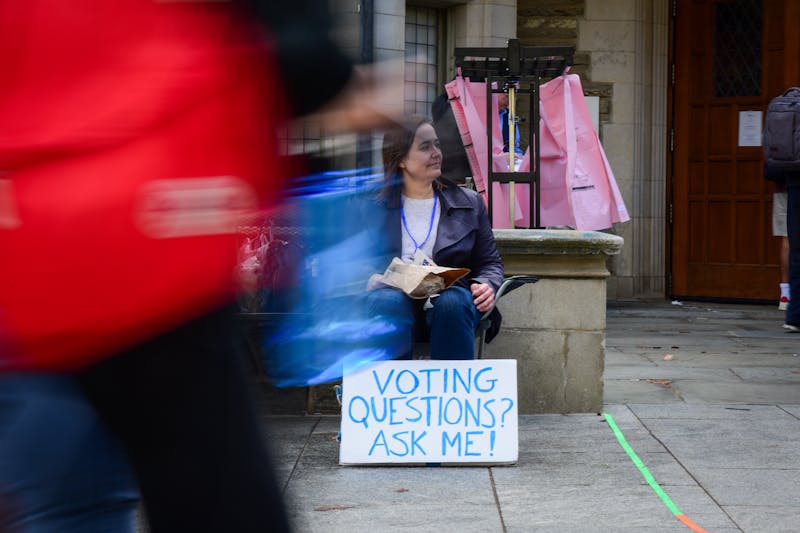
This winter has been one of the warmest in Philadelphia’s history accompanied with minimal snow.
The meteorological season, marked approximately from late December to February, was the fifth warmest in Philadelphia history with an average temperature of 41.2 degrees — the warmest it has been since 2015. Only 0.3 inches of snow were recorded for the duration of the season without a single winter storm warning.
“It didn’t snow much at all this winter, which is something I saw a little in previous years as well," Philadelphia-based Wharton and Engineering first-year Arnav Dhingra said. "I noticed that the weather has also been very random — it’s been hot some days and freezing cold with rain other days.”
Over the past decade, there has been a common warming trend across the United States, which is more prevalent in the winter seasons of the East Coast.
Michael Mann, the director of Penn Center for Science, Sustainability and the Media and the Presidential Distinguished professor in the Department of Earth and Environmental Science, told The Daily Pennsylvanian that this trend has been particularly apparent over the past several years.
“There is some natural year-to-year variability in winter temperatures but there is a clear warming trend that is particularly pronounced in winter in the Eastern U.S.,” Mann said. “The year-to-year fluctuations combine with the human-caused warming trend to increase the probability of a very warm winter over time.”
Mann added that the lack of snow marked a historical first for the city, resulting from the warming trend.
“The result, in this case, is the first snowless winter in Philadelphia on record,” he said.
Philadelphia’s winter, along with marked differences in winter temperatures across the United States, is an indicator of the initial effects of climate change, said Mann. Effects — such as the snowless winter — can be expected to increase over time if there is not a drastic decline in human-driven carbon emissions.
“Snowless winters in eastern Pennsylvania can be expected to become more and more common over time if we continue to warm the planet,” Mann said. “On the other hand, if we can ramp down carbon emissions dramatically in the decade ahead, we can prevent a worsening of these and other climate change impacts.”
The impacts of climate change tend to disproportionately impact socially vulnerable groups.
“Low-income communities are particularly vulnerable,” Mann said. “We must provide tools and infrastructure to help these communities better insulate themselves from these impacts.”
Mann said he believes that it is better to mitigate these climate-related issues rather than try to adapt to them.
“All of this will only get worse if we continue to warm the planet by burning fossil fuels and generating carbon pollution,” he said. “So the most important thing we can do is transition away from fossil fuels as quickly as possible.”
Mann said that supporting politicians and organizations with platforms focused on addressing climate change is a way to make an impact.
“As individuals, the most important thing we can do is turn out and vote for and support politicians who are supportive of those efforts, while voting out those who are not,” Mann added. “We can also support organizations that are working toward these policy goals.”
Dhingra, who said he has been personally affected by these changes, echoed Mann’s sentiment.
“This has definitely affected my life, as I am never sure what to expect,” Dhingra said. “Instead of adapting, though, I think we should help by decreasing pollution and greenhouse gas emissions in order to slow climate change.”
The Daily Pennsylvanian is an independent, student-run newspaper. Please consider making a donation to support the coverage that shapes the University. Your generosity ensures a future of strong journalism at Penn.
Donate






